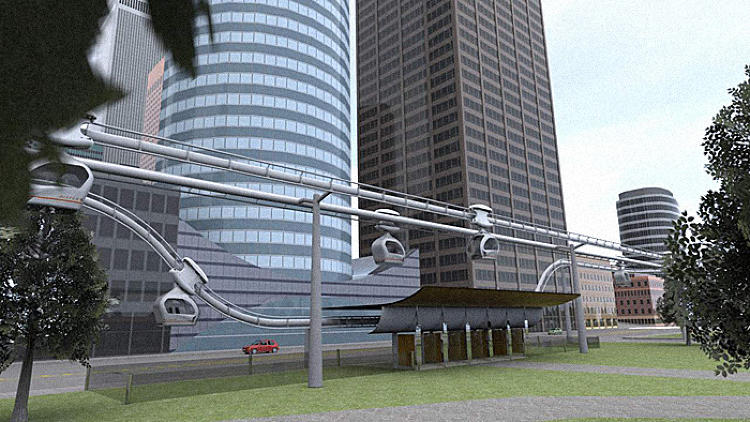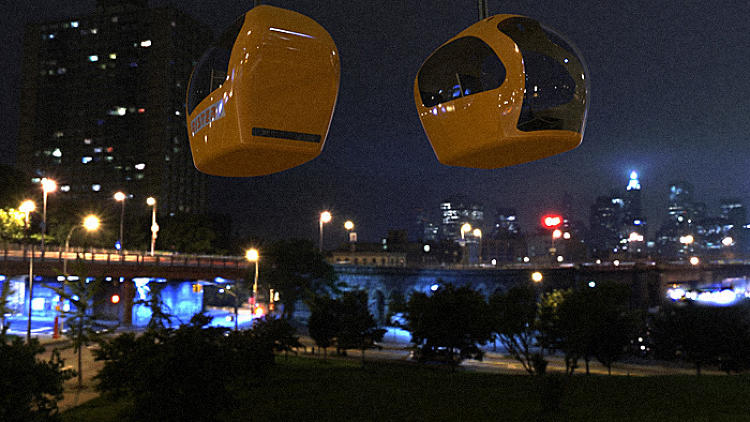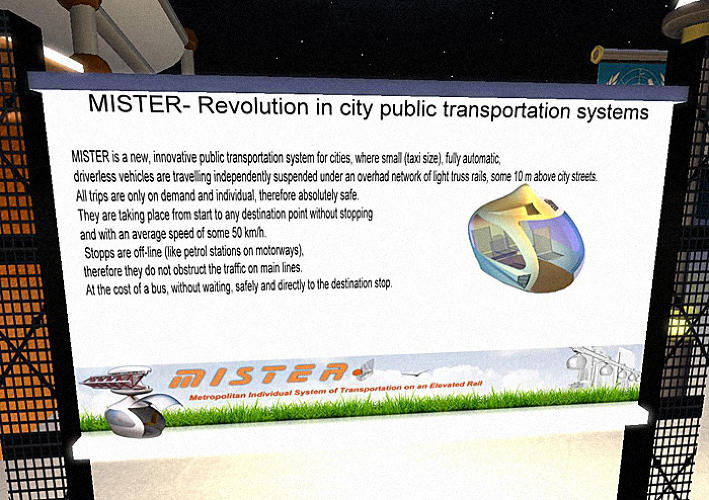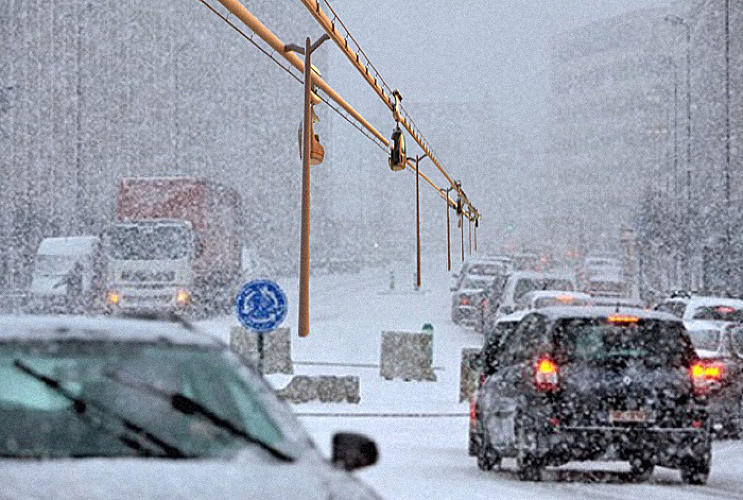This futuristic “personal rapid transit” network would deliver passengers right to their doors. Now they just need the money to build it.
When Ollie Mikosza describes Metrino pods, it sounds like he’s telling a riddle. “It’s an electric car, except you don’t drive it,” he says.
Metrino pods are the individual units of his personal rapid transit system that the Indian government is looking into. As opposed to mass transit systems, personal rapid transit (PRT) systems use rail networks that frequently branch off the main route. Passengers take pods that are sized for individuals or small groups to drop them off at precisely their destination. “It’s a self-driving car, except it doesn’t move on the general network of roadways, but on the dedicated, non-collision network of its own rail system,” Mikosza says.
Proponents of PRT believe that such systems can provide the personal convenience of cars with the dedicated infrastructure of mass transit, avoiding congestion and getting people right to their destinations—all for a fraction of the cost. According to Mikosza, Metrino pods could carry 10 times as many people as subway, buses, or light rail for the same construction and operation costs. And because they’re suspended above the ground, they don’t need to slow down in adverse weather and traffic and can easily make steep climbs. More importantly, they would help solve two major problems in big cities today: congestion and air pollution.

“It’s an electric car, except you don’t drive it.”
From our partners:

Metrino pods are the individual units of a personal rapid transit system.

Passengers take pods that are sized for individuals or small groups to drop them off at precisely their destination. “It’s a self-driving car, except it doesn’t move on the general network of roadways, but on the dedicated, non-collision network of its own rail system,” says Ollie Mikosza.

Proponents of PRT believe that such systems can provide the personal convenience of cars with the dedicated infrastructure of mass transit, avoiding congestion and getting people right to their destinations—all for a fraction of the cost.

According to Mikosza, Metrino pods would carry 10 times as many people as subway, buses, or light rail for the same construction and operation costs.

And because they’re suspended above the ground, the don’t need to slow down in adverse weather and traffic and can easily make steep climbs. More importantly, they would help solve two major problems in big cities today: congestion and air pollution.

For now, the Indian government has effectively given the go ahead for a pilot program. But it’s a heck of a pilot program. The route will span 50 kilometers from New Dehli to Manesar, along one of the country’s busiest highways.
There will be six stops, three in each direction, per kilometer of track. Because the pods will only descend to station level when making a stop, other pods on the track that aren’t stopping at a given station can continue on uninterrupted.

That one simple fact makes traveling on a PRT network that much more convenient than light rail or subways while also avoiding the traffic jobs on roadways today.

It shows that India has the spirit for solutions, in part because they have much less money to throw around than the U.S. or European countries,” says Mikosza.

The major catch for now is that investors haven’t seem to caught on. Miksoza says he is still in need of private financing to actually construct the network.

He has a right-of-way from the Indian government, but doesn’t have the cash to make it happen.
Last year, New Jersey was experimenting with its own PRT system, called JPods, though construction has not yet begun on that system because of regulatory hurdles. Mikosza emphasizes that all of the technological components for PRT are tested and proven and could be enacted today, if only municipalities and investors would catch up.
In that sense, it seems India is positioning itself as the first country to formally endorse PRT as a model for its transportation system.
“It shows that India has the spirit for solutions, in part because they have much less money to throw around than the U.S. or European countries,” says Mikosza. “So they are probably going to jump a whole generation of technology, similarly to how they jumped over copper landlines for the telephone system straight to mobile phones.”
For now, the Indian government has effectively given the go ahead for a pilot program. But it’s a heck of a pilot program. The route would span 50 kilometers from New Dehli to Manesar, along one of the country’s busiest highways. There would be six stops, three in each direction, per kilometer of track. Because the pods only descend to station level when making a stop, other pods on the track that aren’t stopping at a given station can continue on uninterrupted. That one simple fact makes traveling on a PRT network that much more convenient than light rail or subways while also avoiding the traffic on roadways today.
The major catch for now is that investors haven’t seem have joined in. Miksoza says he is still in need of private financing to actually construct the network. He has a right-of-way from the Indian government, but doesn’t have the cash to make it happen.
“Every single major invention like this—whether they were cell phones or personal computers or airplanes or cars—were laughed at by their contemporaries in every case,” says Mikosza.
This feature is adopted from FastCoExist.















